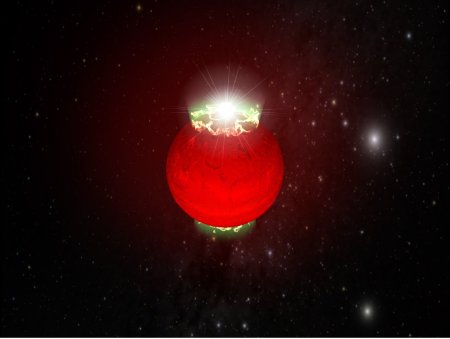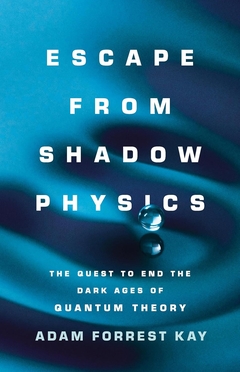Investigating brown dwarfs is not for the faint of heart. With a mass below what’s needed to sustain hydrogen-burning fusion, they’re hard to see, and they may be far more numerous than we’ve previously estimated. Nor do we have a good handle on how they function, to judge by a new study showing that these objects can possess powerful magnetic fields. It turns out that the ‘failed star’ designation may be a bit inapt. Sure, they’re dim objects but in recent years, it has been discovered that some brown dwarfs put out beams of radio waves that are thousands of times brighter than any detected from our Sun.
Brown dwarfs, in other words, are actually pretty lively. If you think about other sources of flashing radio signals, pulsars come immediately to mind. Their powerful magnetic fields and incredibly fast rates of rotation make figuring out how they produce their signals a difficult matter. Now we find brown dwarfs emerging as a second class of stellar objects that produce such powerful and persistent radio signals. But their emissions come from much slower systems, somewhat easier for astronomers to model and showing similarities to radio emissions generated by planets like Jupiter.

Image: Artist’s impression of the “super-aurorae” present at the magnetic poles of these radio emitting dwarfs that are responsible for the radio pulsations. Credit: Gregg Hallinan/National University of Ireland.
The new work rules out the processes of radio emission found in the Sun — the brown dwarf pulses are far too bright to be explained in this way. What brown dwarfs seem to represent, in fact, is a kind of missing link between pulsar-style emissions and those we find around Jupiter (the giant planet’s emissions can sometimes exceed those of the Sun). Says Gregg Hallinan (National University of Ireland, Galway):
“Brown dwarfs tend to be seen as a bit boring – the cinders of the galaxy. Our research shows that these objects can be fascinating and dynamic systems, and may be the key to unlocking this long-standing mystery of how pulsars produce radio emissions.”
Of the three brown dwarfs Hallinan’s team studied with the Very Large Array, the dwarf TVLM 513 points best to the similarity between what we see at Jupiter and the distant pulsar flashes. One possible source of the Jovian emissions: rapid rotation that promotes electron acceleration when electrically charged gas from Io is accelerated by the planet’s magnetic field. The observed radio ‘flash’ around the brown dwarf occurs every 1.96 hours, but there seems to be no binary system here, nor have any planets been detected. Just what makes the high energy electrons accelerate into the dwarf’s magnetic poles remains a mystery.
These radio emissions are powerful enough to flag the size of the brown dwarf’s magnetic field. So what percentage of known brown dwarfs is a pulsing radio source? That question, now due to be studied by Hallinan’s team, is an important one. Assuming pulsing sources are frequent, they could become the key to detecting more of the difficult to observe dwarfs. That would make brown dwarfs a little less exotic and provide a real boost in fleshing out our catalogue of stellar systems in nearby space.


What never ceases to amaze me is how little we really KNOW about stars despite our understanding of basic nuclear physics. The explosion in astronomical knowlege since the early 90s continues unabated. These are really interesting times.
Yes, the exoplanet hunt alone is cause for celebration. The next ten years should see results that will have huge implications, starting with the finding of terrestrial worlds in other stellar systems and going from there. Interesting times indeed!
A Surprising Reversal of Temperatures in the Brown-Dwarf Eclipsing Binary 2MASS J05352184-0546085
Authors: Keivan G. Stassun, Robert D. Mathieu, Jeff A. Valenti
(Submitted on 24 Apr 2007)
Abstract: The newly discovered brown-dwarf eclipsing binary 2MASS J05352184-0546085 provides a unique laboratory for testing the predictions of theoretical models of brown-dwarf formation and evolution. The finding that the lower-mass brown dwarf in this system is hotter than its higher-mass companion represents a challenge to brown-dwarf evolutionary models, none of which predict this behavior. Here we present updated determinations of the basic physical properties of 2M0535-05, bolstering the surprising reversal of temperatures with mass in this system. We compare these measurements with widely used brown-dwarf evolutionary tracks, and find that the temperature reversal can be explained by some models if the components of 2M0535-05 are mildly non-coeval, possibly consistent with dynamical simulations of brown-dwarf formation. Alternatively, a strong magnetic field on the higher-mass brown dwarf might explain its anomalously low surface temperature, consistent with emerging evidence that convection is suppressed in magnetically active, low-mass stars. Finally, we discuss future observational and theoretical work needed to further characterize and understand this benchmark system.
Comments:
31 pages, 7 figures, accepted by ApJ
Subjects:
Astrophysics (astro-ph)
Cite as:
arXiv:0704.3106v1 [astro-ph]
Submission history
From: Keivan G. Stassun [view email]
[v1] Tue, 24 Apr 2007 02:11:52 GMT (223kb)
http://arxiv.org/abs/0704.3106
Jets of matter have been discovered around a very low mass
‘failed star’, mimicking a process seen in young stars. This
suggests that these ‘brown dwarfs’ form in a similar manner
to normal stars but also that outflows are driven out by
objects as massive as hundreds of millions of solar masses
down to Jupiter-sized objects.
Read more in ESO 24/07 at:
http://www.eso.org/outreach/press-rel/pr-2007/pr-24-07.html
Related theory(s) asserts that the reason that Jupiter and Brown Dwarfs emit radio waves is because they have specific characteristics in common. Jupiter, for example because of its size, has a large atmosphere and magnetic field and a relatively fast spin, roughly 10 hours per rotation. Jupiter is known to emit twice as much radiation as it receives from the sun. Some theories assert that this is because of its internal heat which is the result of gravitational pressures which cause internal molecular and atomic oscillation. This could also be true of brown dwarfs, and other larger planets outside the solar system. If these bodies emit enough EM radiation, either as infra-red, visible, or possibly ultra-violet light, some of this radiation could be absorbed by a thick atmosphere and re-radiated in the form of radio waves.
Less of this type of radio emissions would come from stars, which are essentially atomic-particle plasmas on their surface, interior, and atmosphere. This plasma essentially radiates the spectral gamut but a stars atmosphere, because of its temperature, absorbs and re-radiates very little. Those radio waves radiated for the most part are due to wide fluxes is the magnetic field on a stars surface, also usually observable as large stellar flares like our sun.
forrest
very interesting points forrest,some think that jupiter could have become a second star right here in our own solar sysytem! actually “happened” in one of the space odyssey series of books by arthur c clarke…all of which i have read by the way.as i say i am very much into all of this stuff. thanksa your friend george
Pulsating radio waves seem to be more of an intractable phenomenon. Having an orbiting body is one explanation but that the researchers seem to have discounted in the above stated case(s). Another possibility is that the surface has hot spot(s) on it like Jupiter and Saturn have that would be strong enough to emit heavy EM radiation of some sort. The sources could be either heat or electromagnetic in nature. Another more remote possibility is that there is a “cloud” between us, the observer, and the Brown Dwarf. As the cloud loads up with radiation from this brown dwarf it continuously loads and discharges in regular intervals in the radio-wave spectrum. It seems also possible that it could be a neutron star that has pulled an atmosphere from another source or one that is not fully formed having a condensed neutron center with an uncondensed cooling atmosphere that is still radiating like a pulsar.
All for now, forrest